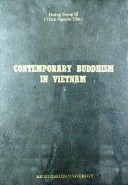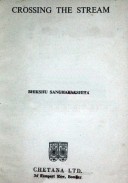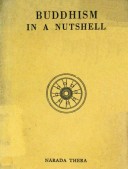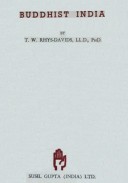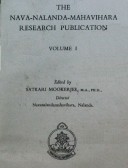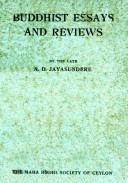Tìm Sách
Sách tiếng Anh-English >> Contemporary Buddhism In Vietnam- A focus on Hue Area
Thông tin tra cứu
- Tên sách : Contemporary Buddhism In Vietnam- A focus on Hue Area
- Tác giả : Thích Nguyên Tâm
- Dịch giả :
- Ngôn ngữ : Anh
- Số trang : 338
- Nhà xuất bản : Aichi Gakuin University
- Năm xuất bản :
- Phân loại : Sách tiếng Anh-English
- MCB : 1210000008282
- OPAC :
- Tóm tắt :
CONTENTS
Photographic Illustrations
Introduction
Chapter One: Monks—Life and Activities
- Course of practice to be a bhikkhu
- Meaning of pabbajja
- First step—pabbajjncelebration for điệu
- Important of practice as a điệu
- The pabbajjacelebration for điệu
- After the celebration
III. Second step—celebration for sãmanera
- Celebration for sãmanera
- After the celebration
- Third step—Upasampadaceremony
- Preparations
- Organizing exam
- The Upasampadãceremony
- Offering rite
- After higher ordination
- Remarks
- The uposatha ceremony
- Its meaning and purpose
- The Uposathaday
- Preliminary preparations
- Performing the ceremony
- Remarks
- Duties of monks
- The Summer Retreat and Invitation (pavaranã) ceremony
- The summer retreat
- Meaning of summer retreat
- Preparations
- Regulations applied for tile summer retreat as seen in centers of Hochiminh City
- Its special daily schedule
- The formal rite for having lunch
- Remarks
- The Invitation
- The ceremony
- Remarks
- Daily life of monks
- Daily schedules
- Schedule ill Mahãyãna monk temples in Hue City
- Schedule ill Ch’an monastery in Southern Vietnam
- Remarks
- Daily life of điệu
III. Daily life of samanera
- Daily of bhikkbu
- The way of naming as seen in monk temples of Hue City
- Giving the dhamma names
- Giving die dhamma tides
Nomination of Most Venerables and Venerables regulated by the Vietnam Buddhist Sangha
- Summary
Chapter Two: Nuns—Life and Activities
- An overview of Vietnamese nuns
- About the founder of the Vietnamese nuns
- Life course to be a bhikkhunĩ
- Dieu—the newcomer—first step
- Samaneri(woman novice)—second step
III. Sikkbamãnã—third step
IV Bbikkbuni—last step
- The Upasampada(higher ordination) ceremony
- Asking the sangha of monks for justification
- Daily life of nuns and their activities
- Daily schedules
- Schedule in Mahãyãna nun temples in Hue City
- Schedule in Ch’an nunneries
- Remarks
- Special schedules applied for the summer retreat
- Special schedule of a nun temple in Hue City
- Special schedule of a Ch’an nunnery in Southern Vietnam
- Special schedule of a center of summer retreat in Hochiminh City
III. Daily life of nuns
- Summary
Chapter Three: Traditional Buddhist Rituals & Annual Festivals in Vietnam
- Two kinds of rites
- Rites for monks and nuns
- Rites for the laity
- Buddhist services for the dead
- Buddhist services for the living persons
- Buddhist rites for monks and nuns—The Rite of Invocation and Praise)
- The Rite of Invocation and Praise
- Remarks
- Buddhist rites for the laity
- Buddhist services for the dead
- Buddhist funeral rites
- Buddhist after funeral rites
- The Great Rite of Food-Offering to the Hungry Ghosts
- Buddhist services for the living persons
- The praying rite for the sick
- The praying rite for the New Year
- The praying rite for enshrining the Buddha’s image or statue
- Remarks
- Some kinds sớand điệp
- Classification
- The case of sớ
- The case of điệp
- Some typical kinds
- The sớ for cầu an
- The sớ for cầu siêu
- The điệp (IS) for offering of each week
- The funeral điệp
- Remarks
- Annual Festivals
- The Tet Festival
- The Buddha Jayanti Day
- The Ullambana Festival(Filial Piety Festival)
- Other Buddhist festivals throughout Vietnam
- Summary
Chapter Four: Theravãda Buddhism in Vietnam
- Period of introduction
- At die time of King Asoka’s reign
- At the beginning of the 20th century A.D.
III. The establishment of the first Theravãfa Buddhist Sangha in Vietnam
- Establishment of Tổng Hội Cư Sĩ
- Establishment of the Vietnam Theravãda Buddhist Sangha
- Social activities and modes of practice of Theravãda monks as seen in Hue City
- Modes of practice
- Daily schedule
- Some remarks of the schedules applied in Vietnam and Burma
- Daily life of monks
- Daily life of điệu(beginning practitioner)
- Daily life of sãmanera
- Daily life a hhikkhu
- Precept Recital, Summer Retreat and Invitation
- Precept Recital (uposatba)
- Summer Retreat (vassa)
III. Invitation (pavarana)
- Festivals and ceremonies
- Festivals
- Festival of January 15th
- Festival of April 15th
- Festival of June 15th
- Kathina-offering: festival
- Ceremonies
- The Tet Holiday
- The Filial Piety Festival (Ullamhana Festival)
- dhists
- About suttas(scriptures or discourses)
- About gãthãs(stanzas)
- About parittas(protecting spells)
- Summary
Chapter Five: The Vietnamese Khất Sĩ Sect
- Its origin
- An overview of this Sect
- Monk Minh Đăng Quang—Its founder
III. Remarks
- Some outstanding characteristics
- Its teachings—A synthetic harmony between Mahãỵãna and Theravãda teachings
- The case of the Chơn Lý
- The case of Nghi Thức Tụng Niệm(Ritual for Recital and Chanting)
- Remarks
- Vietization and poetization of scriptures
- Some examples
- Some remarks
III. Its robes (civara) and bowl (patta)
- One set consisting of three parts of robes (tecivara)
- Bowl (patta) The periods of development of this sect
- The embryo period (1944-1954)
- The period of development (1954-1964)
III. Legalised period (1964-1974)
- Period of stable settlement and harmony (1975 up to now)
- Remarks
- Its monks—daily life and activities
- Former schedule
- Present schedule in temples of die Khất Sĩ Sect
III. Daily life of chú huệ
- Daily life of sãmanera
- Daily life of bhikkbu
- Remarks
- Some similarities
- Some differences
- Its nuns—daily life and activities
- Daily schedule
- Period to become a bhikkbunĩ
- Beginning practitioner
- Samaneri
- Sikkbantãnãand bbikkhuni
III. Remarks
- Additional regulations of this sect
- Summary
Chapter Six: The Gia Đình Phật Tử and Some Other Organizations of Buddhist Layfollowers in Vietnam Buddhism
A. The Gia Đình Phật Tử
- Its former organizations
- Its first embryo period—the
- The second period—the
- The third period—the
- Remarks
- The birth of
- Its establishment
- Its purpose and rules
- About its badge
- About its song
- About the way of greeting
- About the color of clothes
- About die organization of a GDPT
III. Its program of Buddhist teachings
- Oanh Vũ
- Ngành Thiếu
- Ngành Thanh
- Roles and contributions of the GDPT to the nation as well as to the Vietnam Buddhist Sangha
- To sum up
- Some other organizations of Buddhist layfollowers
- The Đạo Tràng Bát Quan Trai(Eight Commandment Organization)
- The Đạo Tràng Pháp Hoa(Lotus Flower Organization)
III. The Hội Từ Thiện(Charitable Association)
- The Đạo Tràng Đồng Niệm(Mutual Nembutsu Organization)
- Remarks
- Summary
Conclusion
Bibliography
 Facebook
Facebook
 Google
Google
 Google+
Google+
